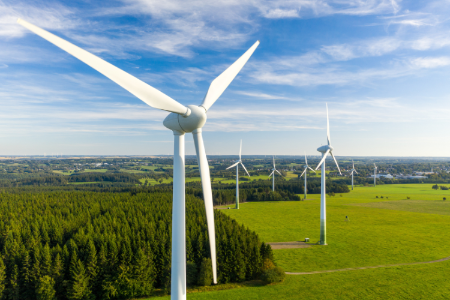What are the main points of the Gremillet bill?
June 2025
Réseau pour la transition énergétique (CLER)
On 24 June, the French National Assembly rejected by a large majority the Gremillet bill on ‘national programming and simplification of legislation in the energy sector’. The bill, which is intended to lay the foundations for the future multi-annual energy programme (PPE), will return to the Senate at the beginning of July. Etienne Charbit, Europe Project Manager, and Auréline Doreau, Energy and Territories Project Manager at the Cler network, take a closer look at this catastrophic text for the industry.
To download : 001_ppl23-555.pdf (1 MiB)

What are the main points of the Gremillet bill?
Etienne Charbit: The text of the Gremillet bill, sponsored by Senator Daniel Grémillet, aims to fill the gap left by the absence of an energy and climate bill that the government was supposed to pass by mid-2023 in accordance with the commitments made in the 2019 Energy and Climate Act. This parliamentary initiative is therefore intended as a response to provide a framework for the future multi-year energy programme (PPE), a strategic tool for French energy policy. This bill therefore touches on several aspects of France’s energy and climate planning for 2035: greenhouse gas emission trajectories, energy mix, energy efficiency, etc.
Does this bill represent a real step backwards in relation to European targets?
EC: Yes, particularly with regard to renewable energy development targets. The European Union has adopted a target of at least 42.5% renewable energy in its final energy consumption by 2030.
France, for its part, wants to achieve at least 44%. However, the text does not specify either a target (only a target expressed in terms of ‘decarbonised energy’ is indicated) or a trajectory for achieving the European target.
But the bill stands out above all for its clear focus on reviving nuclear power (with a target of 14 new nuclear reactors committed by 2030), while ignoring the necessary massive development of renewable energies. These are costly and unrealistic targets for accelerating the electrification of energy use, given that the new nuclear reactors will not be operational before 2038 at the earliest.
While the text produced by the Senate was already highly problematic in terms of energy production, the version rejected by the National Assembly was disastrous in every respect: a moratorium on wind and solar power, a reduction in the energy efficiency target for 2030, major setbacks in the renovation of energy-inefficient buildings, etc. This text was a reflection of the energy and climate policy of France as seen by the right and far right, which had a majority at the time of the vote on most of the amendments in the National Assembly.
What is the future for renewable energies?
Auréline Doreau: The text proposed a moratorium on wind and solar power in a formal vote in the National Assembly, which runs counter to all scenarios for achieving carbon neutrality (RTE Réseau de Transport d’Electricité, ADEME, Association négaWatt, The Shift Project, etc.), while new nuclear reactors will not be available until 2038 at the earliest. This moratorium, which revealed a clear lack of understanding of energy issues on the part of the MPs who initially voted for it, was fortunately rejected on 24 June by left-wing and centrist MPs, who this time turned up to vote.
However, the future is not bright for renewable energies, as setbacks are underway, particularly in the solarisation of buildings and support for photovoltaic projects. Furthermore, PPE 3, which was supposed to set a course for renewables, is already almost two years behind schedule, but Minister Marc Ferracci has indicated that the Gremillet bill must bring the parliament’s opinions into line before this roadmap can be published. France is thus locking itself into its dependence on imported fossil fuels, which already costs €60 billion a year.
What is the Cler network proposing for citizen-led renewable energy?
AD: Together with the Climate Action Network (RAC), the Cler network and other members of the Collective for Territorial Renewable Energy, we have proposed an amendment to set a clear and ambitious target for the development of citizen-led renewable energy (all sectors combined): 5 TWh by 2030, compared to the 426 existing projects meeting the Energy Sharing label in 2025, representing 1.7 TWh.
Unfortunately, this amendment was rejected, even though citizen-led renewable energy promotes better sharing of the value created through significant local economic benefits. We will continue to push for measures that promote the significant value sharing of renewable energies, in particular through the creation of a support fund for local projects, as envisaged in Article 93 of the law on accelerating renewable energy production, which has not yet been translated into an implementing decree.
What are the next steps for the Gremillet law?
EC: The text will go to the Senate for a second reading in early July, but given the National Assembly’s negative vote, it will be examined in the version voted on in the first reading. Although the most controversial provisions, such as the moratorium on solar and wind power, are likely to be dropped, further setbacks for renewable energy and energy efficiency are to be expected.
Finally, the government has confirmed that it will wait until the end of the debates on the text before publishing the PPE, which should add a few months to a text that is already years behind schedule. This is a new and very worrying delay, which would be catastrophic if the government were to fall before the end of its review.